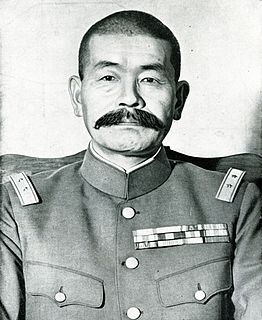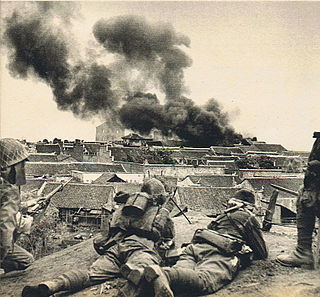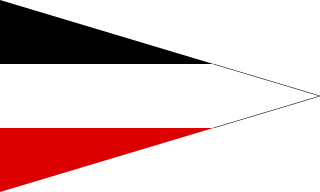Japan
- (Early May - Late June 1940)
11th Army - Lt. General Waichirō Sonobe [5]
- Northern Pincer
- 3rd Division - General Masataka Yamawaki [1,4]
- 5th Infantry Brigade
- 6th Infantry Regiment
- 68th Infantry Regiment
- 29th Infantry Brigade
- 18th Infantry Regiment
- 34th Infantry Regiment
- 3rd Field Artillery Regiment
- 3rd Cavalry Regiment
- 3rd Engineer Regiment
- 3rd Transport Regiment
- 5th Infantry Brigade
- 3rd Division - General Masataka Yamawaki [1,4]
- Central Force
- 39th Division - Lt Gen. Keisaku Murakami [1,4]
- 39th Infantry Brigade Group:
- 231st Infantry Regiment
- 232nd Infantry Regiment
- 233rd Infantry Regiment
- 39th Recon Regiment
- 39th Field Artillery Regiment
- 39th Military Engineer Regiment
- 39th Transport Regiment
- 39th Infantry Brigade Group:
- 39th Division - Lt Gen. Keisaku Murakami [1,4]
- Southern Pincer
- 13th Division - General Shizuichi Tanaka [1,4]
- 26th Infantry Brigade
- 58th Infantry Regiment
- 116th Infantry Regiment
- 103rd Infantry Brigade
- 65th Infantry Regiment
- 104th Infantry Regiment
- 19th Mountain Artillery Regiment
- 17th Cavalry Regiment[1]
- 13th Engineer Regiment
- 13th Transport Regiment
- 20 Tanks [1] Possibly from 7th or 13th Tank Regiments [5]
- 26th Infantry Brigade

Shizuichi Tanaka was a general in the Imperial Japanese Army, who, at the end of World War II, was commander of the Eastern District Army, which covered the Tokyo-Yokohama area.
- 13th Division - General Shizuichi Tanaka [1,4]
- Ichang Column
- Ikeda Detachment - Major Gen. Naomi Ikeda / 6th Division [5]
- 11th Infantry Brigade
- 13th Infantry Regiment
- One battalion each from 47th, 23rd, 45th Infantry Regiments / 6th Div.
- One battalion of 2nd Independent Mountain Gun Regiment / 11th Army
- One platoon of 6th Cavalry Regiment / 6th Div.
- One company of 6th Engineer Regiment / 6th Div.
- Two companies of 6th Transport Regiment / 6th Div.
- Kansui(漢水) Detachment - Col. Higaki (17th Anchorage HQ)[5]
- 17th Anchorage HQ
- 6th Reserve Battalion of Imperial Guard Division
- 6th Independent Engineer Regiment
- 1st Company of 10th Independent Engineer Regiment
- Five Surface Transport Units
- Construction Transport Unit
- 9th Transport Supervision Unit
- 11th Infantry Brigade

The 6th Division was an infantry division in the Imperial Japanese Army. Its call sign was the Bright Division.
The 13th Infantry Regiment was an infantry regiment in the Imperial Japanese Army. The regiment was attached to the 6th Infantry Brigade of the 6th Division and participated during the Second Sino-Japanese War. The regiment fought in the later stages of World War II, assigned to the Japanese Seventeenth Army at Bougainville Island in the Solomon Islands.
- Ikeda Detachment - Major Gen. Naomi Ikeda / 6th Division [5]

The 3rd Division was an infantry division in the Imperial Japanese Army. Its call sign was the Lucky Division.
The 39th Division was an infantry division of the Imperial Japanese Army, activated 30 June 1939 in Hiroshima, simultaneously with the 38th, 40th and 41st divisions. Its call sign was the Wisteria Division.

The 13th Division was an infantry division in the Imperial Japanese Army. Its tsūshōgō code name was the Mirror Division, and its military symbol was 13D. The 13th Division was one of four new infantry divisions raised by the Imperial Japanese Army (IJA) in the closing stages of the Russo-Japanese War 1 April 1905, after it turned out what the entire IJA was committed to combat in Manchuria, leaving not a single division to guard the Japanese home islands from attack.
Navy
- 1st China Expeditionary Fleet [5]
- NLF from 1st China Expeditionary Fleet[5]
Airforce: [3]
- 3rd Hikodan - Major General Kuwana
- Headquarters in Hankou
- At Hankou airfield:
- 17th Dokuritsu Hiko Chutai [Reconnaissance squadron.]
- 44th Sentai (one reconnaissance and two direct cooperation units)
- 59th Sentai
- 1st Chutai Nakajima Ki-27
- 2nd Chutai Nakajima Ki-27
- At Wuchang airfield:
- 11th Sentai (less one chutai)
- 2nd Chutai Nakajima Ki-27
- 3rd Chutai Nakajima Ki-27
- 75th Sentai [Light bomber unit]
- 11th Sentai (less one chutai)
- 3rd Hikodan was directed to cooperate with the land operations of the 11th Army and suppress the enemy air force.
Other forces in the Ichang Campaign, (Security forces to replace offensive units.)
Contents
- Yoshida Detachment - Col. Yoshida [5]
- 61st Battalion / 14th Independent Mixed Brigade
- (Sent from 14th Independent Mixed Brigade assigned to Juijiang area [2].)
- 40th Division(partial) - Lt. Gen Naojikiro Amaya [1,2,4]
- (Said to have been sent to Xinyang area at the end of May 1940. [1] This may have been a mistake for the Ogawa Detachment sent from 34th Division.)
- Ogawa Detachment - Col. Ogawa [5]
- 216th Infantry Regiment / 34th Division
- 18th Independent Mixed Brigade - Major-General Koichi Kayashima [2,4]
- 92nd Independent infantry battalion
- 93rd Independent infantry battalion
- 94th Independent infantry battalion
- 95th Independent infantry battalion
- 96th Independent infantry battalion
- Brigade artillery troops
- Brigade engineer unit
- Brigade communication unit
- The 18th Independent Mixed Brigade: Formed on November 7, 1939 and enrolled in the 11th Army order of battle, in the northern Jiujiang area. [2] Said to have been sent from Wuning to Shayang area at the end of May 1940. [1]
- 101st Mixed Brigade - Major General Matsuyama [5]
- China Stationed Infantry Battalion / 27th Division - Tianjin
- 26th Independent Infantry Battalion / 7th Independent Mixed Brigade - Huimin area
- From North China [5]
- Kurahashi Detachment - Col. Kurahashi
- 60th Infantry Regiment / 15th Division
- From 13th Army [5]
- Matsui Detachment - Major General Matsui [5]
- 22nd Infantry Group / 22nd Division - Hangchow
- 3 Battalions
- 22nd Infantry Group / 22nd Division - Hangchow


